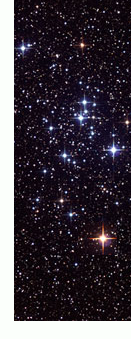
The unit of currency in the Empire is the imperial mael in Schmidt's universe, the imperial mark, or "imperial" for short, in mine. It dominates all the other currencies of Imperial Space.
The current dynasty supports a merchant marine but does not monopolize trade within the Empire. Nor does it charge duties for trade between imperial planets, though it enforces embargoes, e.g. against various lifeforms for ecological reasons, against shipping guns to planets in unrest, or to manipulate the economies of planets belonging to specific factions in the imperial senate.
Trade between the Empire and surrounding planets and associations is full of tarrifs and embargoes. As is usually the case, interstellar trade deals mostly in luxury items or items of specialized hi-tech. Interstellar communications is good, so information goes by courier only for high security.
Typical planets produce their own staples. Most food is produced in factories patterned after the recycling systems of colony ships. Farming is a minor source of food, supplying mostly luxury items.
Emperor Ghenner of the Second Dynasty had to cope with the territorial expansions of his predecessors, including the aquisition of Arret, center of a trade empire. Ghenner was at pains to maintain the prosperity of Arret, but this entailed supporting the Arretine unit of currency, the tellen. Rather than allow two currencies of shifting relative value within the empire, Ghenner fixed the value of the tellen at .6 marks (or .6 maels, for Schmidt's universe). This approximated the then-current value of the tellen, and also reflected the fact that Arretine currency was based on divisions of twelve and sixty.
Most large transactions in the Reach are by data transfer, of course, but physical coinage remains. The combination of the imperial decimal coinage and the Arretine duodecimal coinage produced an exceptionally large number of denominations of coins and bills. These are:
Value Color Common Name 0.0025 black farthing 0.005 brown ha'penny 0.01 red penny 0.02 orange tuppence 0.03 yellow thruppence 0.05 green nickle 0.06 blue tenth-tellen / half-denier 0.10 violet dime / half-crown 0.12 gray denier 0.15 white quarter-tellen 0.20 silver crown 0.24 silver double-denier 0.25 silver quarter-mark 0.30 gold & silver half-tellen / imperial crown 0.36 gold & silver triple denier 0.50 gold & silver half-mark 0.60 gold / black tellen (both coins and bills) 1.00 gold / brown mark (both coins and bills) 1.20 red two-tellen bill 1.80 orange three-tellen bill 2.00 yellow two-mark bill 2.40 green four-tellen bill 3.60 blue six-tellen bill
The six-tellen bill is the highest tellen-based bill. However, the mark bills are issued in denominations of 5, 10, 12, 15, 20, 24, 30, 50, 60, 100, 200, 500, and 1000.
All the bills are cut in rectangles of the ratio one by square r oot of two, in a variety of sizes roughly proportional to their value. The tellen bill is half the size of the two-tellen bill, which is half the size of the four-tellen bill. The other bills of 1:2 ratio are similarly proportioned. The result is that two smaller bills exactly tile a bill twice the value. Another result is that the 1000-mark bill is 28 centimeters long by 20 wide, but then 1000-mark bills are uncommon, and for that matter the Crown doesn't necessarily want large amounts of cash to be handy in size.
Both bills and coins are color-coded in the ancient sequence listed above, though of course no bill is a single solid color.
As with interstellar trade generally, trade in the Reach does not include staples and bulk produce. It's usually luxuries and exotics. Examples: